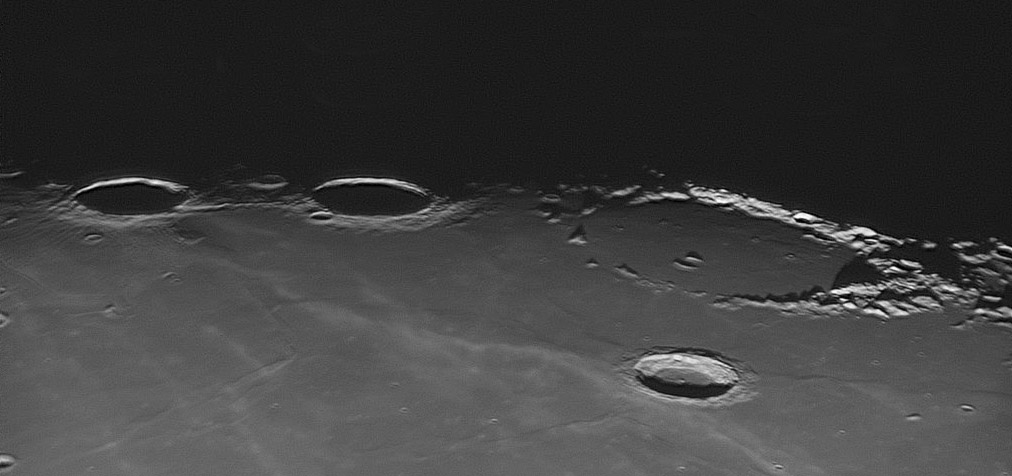October 28, 2020
Spectacles
Originally published April 23, 2011

image by Claude Navarro, Toulouse, France
Looking like a pair of granny glasses, Cardanus (left) and Krafft (right) are nearly twin craters embayed by Procellarum lavas. The cleft between the craters is still unexplained - it looks like a secondary crater chain but it isn't radial to Cardanus. It is just weird. Nearby Eddington with diameter of 118 km is nearly the same size as Letronne and both have lost their mare-facing walls. For craters on the edge of circular impact basins - such as Fracastorius and Doppelmayer - the explanation is that the weight of the mare caused the basin to subside, tilting and lowering the walls so that later lavas overtopped them. But the Procellarum lavas aren't in a recognized impact basin and it isn't certain that Procellarum sagged. But the topography from the farside to Procellarum is sloping downward so perhaps Eddington formed on a pre-existing slope. Another nagging possibility is that crater walls are somehow dissolved by mare lavas. There is no physical mechanism suggested to do this but a 60 m high, 50 km wide flow of lava moving at 15 km/hr would be a great that might push aside a crater wall. But when smaller lava flows do that to cinder cones on Earth there is a trail of rubble from the wall that was rafted away; we never see that on the Moon.
Chuck Wood
Technical Details
April/16/2011 + C14 (F/D = 11) + DMK31AF03 + IR Pass filter; ~500 frames (of 2000) processed with Registax 6
Related Links
Rükl plate 17
Yesterday's LPOD: Quizzical
Tomorrow's LPOD: Textured Reasoning
COMMENTS?
Register, Log in, and join in the comments.



